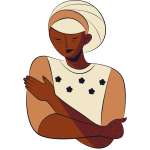Unit 2: Canada the Good? Anti-Black Racism in Canadian History
Week 4 Outline

You have an ePortfolio submission this week!
Topic: Points of Encounter with the ‘N-word’
Remember to submit before Friday at 5pm
This week we are going to kick off Unit 2, and our exploration of Canada’s history of racism, and it’s subsequent erasure in its effort to be portrayed as “better” than other colonized and racist countries (e.g., the USA). We couldn’t possible be as bad as them, right? This week, we will specifically discuss Canadian slavery and segregation. Black people in Canada may have no longer been “owned” but they were still prisoners surviving in our system; surveilled, controlled, and forced into the margins of society. Through this, Canadian historians have been able to paint a very snow-white picture of Canada without Black people, without slavery, and without colonization. We will dig into some of these hidden histories being brough to light in more recent years.
On Tuesday, you will watch a short (30 minute) film, and read a series of four articles explaining various aspects of Canada’s (and southwestern Ontario’s) racial history. You will learn about some key figures in Canadian history, including Viola Desmond, who currently appears on the Canadian $10 bill.
On Thursday, we will come together to examine “Jim Crow” laws within Canada and their role in shaping the social order of the time. In preparation, you will be asked to complete two readings
Topics to be explored
- Jim Crow era (Canadian and U.S. context)
- Hugh Burnett and the struggle for human rights in Dresden, Ontario
- Viola Desmond (Celebrating Black voices)
 Self-Care Reminder!
Self-Care Reminder!
Reading or listening to poetry can be one way to take time for yourself, find connection, affirm your experiences, or just relax.
Maya Angelou’s Still I Rise (1978) is an ever-powerful example.

